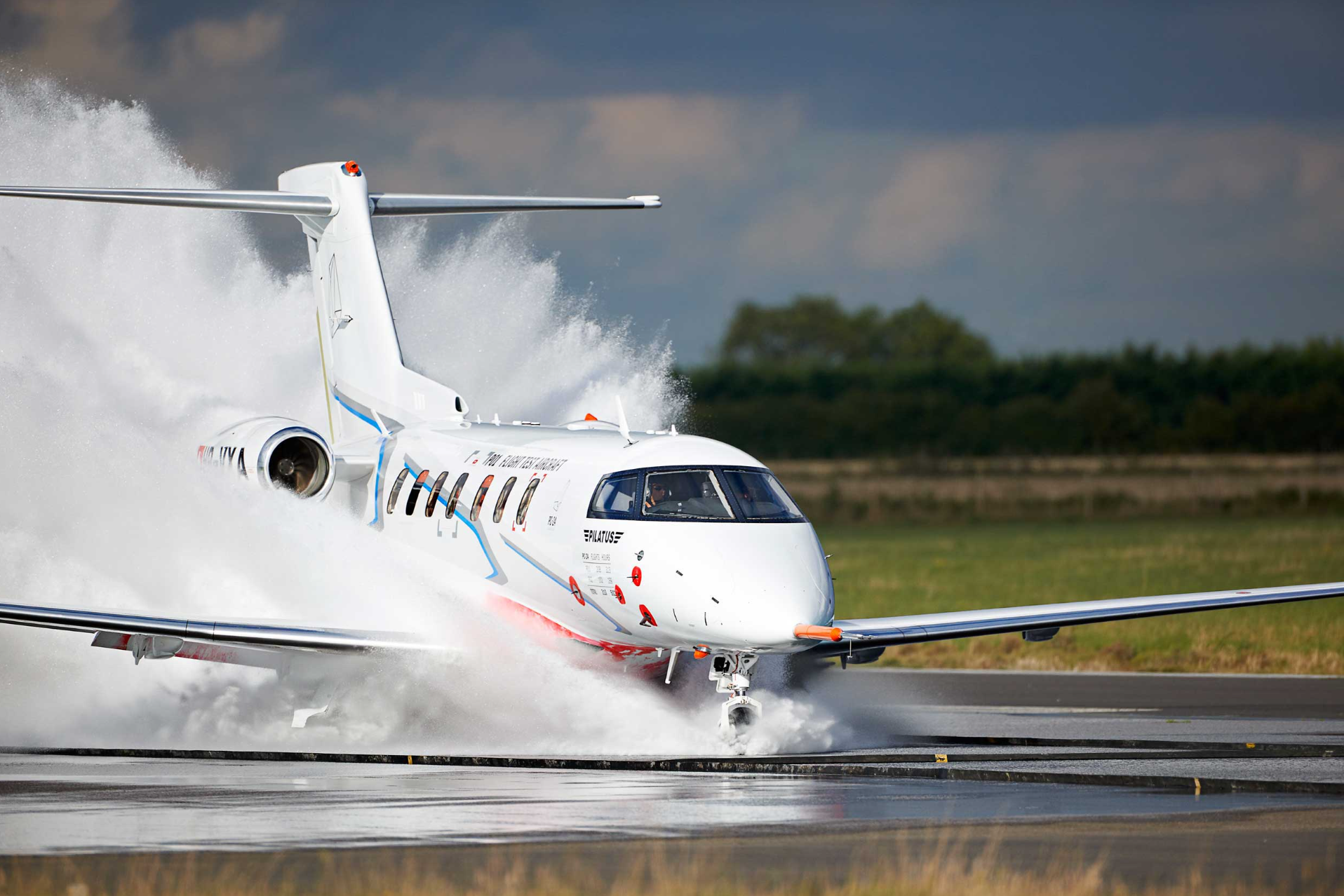Wet Runway
Jump to navigation
Jump to search
<templatestyles src="Template:Hatnote/styles.css"/>

A wet runway in aviation refers to a runway surface with visible dampness or water covering more than 25% of its area, up to a depth of 1/8 inch (3 mm). This condition significantly affects aircraft performance, particularly braking and directional control. The history of addressing wet runways in aviation involves understanding the challenges, developing mitigation strategies, and implementing safety procedures.
Historical Context and Challenges
- Early Aviation:
- In the early days of aviation, runways often lacked adequate friction, leading to dangerous landings in wet conditions.
- Impact on Performance:
- Wet runways reduce friction, increasing stopping distances and making it harder to steer the aircraft, especially during landing.
- Runway Excursions:
- Wet runways are a leading cause of runway excursions, where an aircraft veers off the runway.
Mitigation Strategies
- Grooved Runways
- Grooves in the runway surface help to improve water drainage and reduce the risk of hydroplaning, according to Avion50.
- Porous Friction Course (PFC)
- PFC is a type of runway surface that provides excellent friction and water drainage, further enhancing safety.
- Runway Condition Codes (RWYCC)
- These codes, used in the Takeoff and Landing Performance Assessment (TALPA), provide pilots with information about the runway conditions, according to the FAA.
- NOTAMs (Notices to Airmen)
- NOTAMs provide pilots with real-time information about runway conditions, including wetness or contamination, according to the FAA.
Safety Procedures
- Pilot Training:
- Pilots are trained to account for wet runway conditions during approaches and landings, including adjustments to speed and braking techniques.
- Reduced Approach Speeds:
- Pilots often reduce approach speeds when landing on wet runways to improve control and braking effectiveness.
- Proper Use of Thrust Reversers:
- The use of thrust reversers can help slow the aircraft down, but their effectiveness can be limited on wet runways.
- Monitoring and Reporting:
- Airport inspectors monitor runway conditions, and those conditions are reported to pilots through NOTAMs.
Current Practices
- TALPA:
- The FAA's Takeoff and Landing Performance Assessment (TALPA) program provides a standardized method for assessing and reporting runway conditions, according to the FAA.
- RSC NOTAMs:
- Runway Surface Condition NOTAMs are used to inform pilots about the condition of the runway surface, including wetness and contamination, according to Transport Canada.
- Continued Research and Development:
- Ongoing research continues to explore ways to improve runway friction and reduce the risk of wet runway excursions, according to Avion50.
By addressing wet runway conditions through a combination of engineering advancements, safety procedures, and pilot training, aviation has made significant strides in minimizing the risks associated with wet runway landings.
